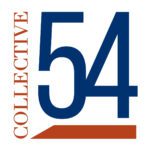The “wow” factor matters. Like it, or not, you are in show business. You are an expert. And your firm is made up of experts. No one wants to buy the boutique that regurgitates other people’s innovations. They want to buy the song writers, aka The Rolling Stones.
<iframe title=”Episode #14 – Are you a True Expert in Your Field?” src=”https://www.podbean.com/media/player/audio/postId/16080985?url=https%3A%2F%2Fwww.podbean.com%2Few%2Fpb-9cd5c-f56059&version=1” width=”100%” height=”122″ style=”border:none;” scrolling=”no” data-name=”pd-iframe-player”></iframe>
TRANSCRIPT
Sean Magennis [00:00:16] Welcome to the Boutique with Capital 54, a podcast for owners of professional services firms. My goal with this show is to help you grow scale and sell your firm at the right time for the right price and on the right terms. I’m Sean Magennis, CEO of Capital 54 and your host. On this episode, I will make the case that when selling your firm, the wow factor matters. And when I say the wow factor, I’m referring to the innovation you’re generating in your field of expertise. I’ll try to prove this theory by interviewing Greg Alexander, Capital 54’s founder and chief investment officer. Greg is considered to be one of the most innovative thinkers in the professional services industry. And, in fact, don’t take my word for it. Adam Prager of Korn Ferry was recently quoted as saying, and I quote, Greg is a world class visionary in our industry. End quote. Greg, great to see you. Welcome to the show today.
Greg Alexander [00:01:22] Thanks, Sean. Good to be here. And thanks for the kind introduction.
Sean Magennis [00:01:25] Let’s begin with a simple definition of innovation specific to the professional services industry. How would you define it, Greg?
Greg Alexander [00:01:35] So innovation is a new idea, a new service, a new business model, maybe a new way of solving a problem. It matters to professional service firms more than other types of businesses because pro-serve firms position themselves as experts and experts innovate. Clients do not pay firms to regurgitate other people’s innovations. And investors surely do not buy firms that are copy cat body shops. They buy firms who are true experts today and will continue to be excellent.
Sean Magennis [00:02:10] Excellent, Greg. So when I think of innovation, I, I think mostly of products. For example, Elon Musk innovated in the auto industry and brought us the Tesla. Reed Hastings innovated in the entertainment industry incredibly and brought us Netflix. I do not think of professional services firms in this way, so can you share some examples in the pro-serve of industry?
Greg Alexander [00:02:34] I’d be happy to. In fact, I am somewhat of a amateur historian in the professional services industry, and I have found many great examples of innovation in our space throughout history. So here are a few fun ones to think about.
Greg Alexander [00:02:50] I admire greatly, Boston Consulting Group. They have built a private partnership with thousands of employees and billions in revenue. But it all started with their founder, Bruce Henderson, and one of his early innovations called the experience curve. This proved that a company’s costs fell as their experience increased. Today, this is widely understood. Back in the 1960s, this was a real innovation. Let’s turn to the law profession. The law profession has pioneered the use of technology for centuries. For example, in the 1920s, the recorded deposition changed the litigator’s relationship to witness testimony forever. Law firms that embraced this scaled rapidly. Imagine the law today without recorded depositions. Very scary. Well, how about the great Italian innovator Luca Bartolomes Pacioli. Say that 20 times in a row. Around fifteen hundred, he invented a system of record keeping that used a ledger and later he wrote the first accounting books that explained the use of journals. This earned him the title of the father of bookkeeping, bookkeeping. And Sean, if the accounting industry can innovate, anyone can.
Sean Magennis [00:04:13] These are really great, Greg, and super interesting. These pioneers were truly the Zuckerberg’s of their day. Are there any others that come to mind for you?
Greg Alexander [00:04:24] Sure, there are dozens and I enjoy speaking about this. Let me share a few more. So I have recently studied the innovations in the marketing and advertising industry. Sean, did you remember these campaigns? When it rains, it pours and a diamond is forever.
Sean Magennis [00:04:37] Yes. And the second one, to my chagrin, because I had to buy a big one once.
Greg Alexander [00:04:43] Well, these were created by an agency led by a gentleman, by the name of N.W. Ayer in the 19th century. He convinced the likes of AT&T, the U.S. Army, [inaudible] to hire a new kind of firm called the Full Service Agency. Rather than just selling advertising space in publication, he offered planning creative and campaign execution. Mr. Ayer innovated at the firm level, creating an entirely new kind of marketing agency. He was a giant. I wish I had the chance to know him. How about I share a few recent examples because we are living in the golden era of boutique innovation. In 2008, the distributed ledger, known as Block Chain, was invented by Satoshi Nakamoto. Transactions will never be the same. An architect by the name of Daniel Cuzzi has turned shipping containers into working farms, producing the equivalent of five acres per container. And I love Wix. They have injected artificial intelligence into website design. What used to take months now takes nanoseconds. A brilliant example of tech enabled services. You get the point. I could go on and on forever.
Sean Magennis [00:06:09] Wow, these these are inspiring examples of innovative pioneers and the professional services industry from yesterday and today and this is a standard all of us should aspire to. And now a word from our sponsor. Collective 54, Collective 54 is a membership organization for owners of professional services firms. Members join to work with their industry peers to grow scale and someday sell live firms at the right time for the right price and on the right terms. Let us meet one of the collective 54 members.
Abbie Jones [00:06:49] Hello. My name is Abbie Jones and I own Abbie Jones Consulting. We serve business owners and facility managers in energy, aviation and industrial spaces. Our current footprint is Kentucky, Tennessee, West Virginia, Virginia, Georgia and we’re expanding. These industrial and commercial clients like you turn to us for many services, including campus utility as builds. Our private utility locators, professional land surveyors, professional engineers and drafting staff can upgrade your random paper as built into a single as filled with critical items like shutoffs. Learned how we can make facility managers happy at Abbie-Jones.com. That’s a-b-b-i-e hyphen j-o-n-e-s.com.
Sean Magennis [00:07:37] If you are trying to grow scale or sell your firm and feel you would benefit from being a part of a community of peers, visit the collective.54.com. So this takes us to the end of this episode and as is customary, we end each show with a tool. We do so because this allows the listener to apply the lessons to his or her firm. Our preferred tool is a checklist. And our style of checklist is a yes-no questionnaire. We aim to keep it simple by asking only 10 yes-no questions. In this instance, if you answer yes to eight or more of these questions, you can prove you were a true expert and you are innovating. If you answer no too many times, you have some work to do. Let’s begin.
Sean Magennis [00:08:33] Number one, have you pioneered a new approach in your niche? Number two, are you more than a one hit wonder? Number three, has your industry adopted your way of doing things? Number four, does your industry use your language as its own? Number five, do the smartest in your niche come to you with the most challenging issues? Number six, as an ecosystem of boutiques formed around your innovation? Number seven, do you mainstage the keynote for the most important industry conference? Number eight, do you get more than fifty thousand dollars for a speech?
Greg Alexander [00:09:34] That’s a real sign that you’re in high demand and a true innovator.
Sean Magennis [00:09:38] Absolutely. Number nine, do employees join your firm for the opportunity to learn from you? And number ten, have you created a legacy that will live on in your niche after you leave?
Greg Alexander [00:09:55] Yeah. I just walked the audience through history and I cited all these examples. Imagine how fortunate we would be if people are speaking about us 500 years from now.
Sean Magennis [00:10:04] That that is part of our goal.
Greg Alexander [00:10:06] Yes, I love that.
Sean Magennis [00:10:08] So in summary, the wow factor really matters. Like it or not, you are in show business. You are an expert. And your firm is made up of experts, investors and acquirers want to invest in and or buy the true experts. The innovators challenge yourself to be one every day.
Sean Magennis [00:10:33] If you enjoy the show and want to learn more, pick up a copy of Greg Alexander’s book titled The Boutique How to Start Scale and Sell Professional Services Firm. I’m Sean Magennis. Thank you for listening.

